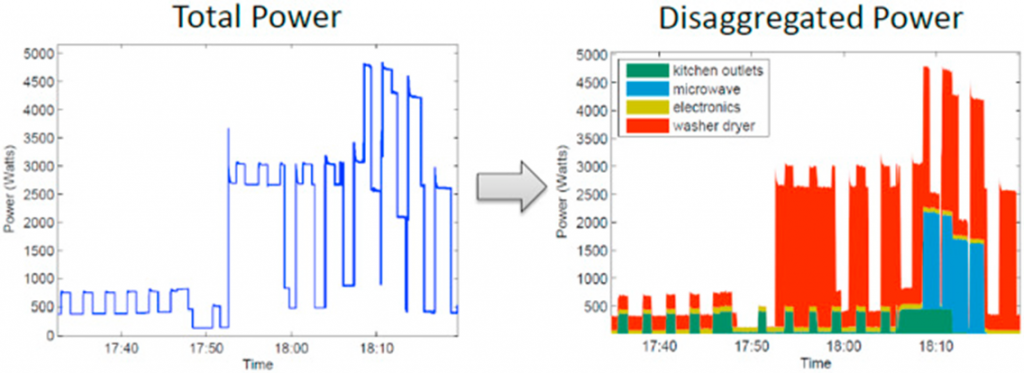Non intrusive load monitoring (NILM)
A smart way to monitor the daily power consumption in a house that can track detect all appliances running from just one sensor.
Load Monitoring Today
Imagine you get your monthly electrical bill and found that you must pay more than the usual amount. There might be a faulty refrigerator or current leak in electrical wirings or maybe just left some appliance ON for too long.
But how do you know which one is the cause? There is no way to be sure…
The only source of information on our electricity consumption is from the monthly electricity bills. Most commonly, the bills only mention how much electricity is spent last month, in kWh, and the total amount with tax breakup we must pay. There are few companies that will also show the previous month electricity consumption from which we can infer our usage pattern and see if something went wrong. There is a lot of guesswork here.
But what if we can know how much electricity is being consumed every minute and then have a mobile app handy to notify when there is an unusual spike in the power. This will help to take immediate actions. If you know what all appliances are running in the house, then we can check each one to see if there is some issue with the specific one. Also, by seeing how much electricity is consumed every minute, we can also take conscious steps to reduce our usage.
Appliance Load Monitoring (ALM)
The energy readings reported every minute still does not tell us what all appliances are ON that contributes to this reading. There is still a lot of guesswork and trial/error to identify the exact appliance. Hence, we need to know the appliances are running at the given time instance. The method to monitor appliances running in a building is called Appliance Load Monitoring (ALM). An ALM consists of one or multiple smart metering devices that collect and analyze the total energy consumed. The system can pinpoint exactly what device contribute to the energy reading from the meter.
The ALM system can be developed in two ways,
- Intrusive Load Monitoring System (ILM)
- Non-Intrusive Load Monitoring System (NILM)
The ILM is a traditional method of deploying sensors at each appliance and monitoring their consumption. This makes the system costly with large installation overheads. On the other hand, in NILM, only one smart meter is required per home. The smart meter captures the aggregated data from a single point of source and then this data is disaggregated into appliances using various electrical features, specific to each appliance. Hence, NILM offers an economically viable solution for an ALM system.
Non Intrusive Load Monitoring (NILM)
The idea with NILM algorithm comprises basically two things,
- Load Identification
- Load Disaggregation
The figure below shows an example of the NILM algorithm. The idea here is to segregate the total power reading into specific appliances running at that instance. So first, we must identify what all appliances are running the given time instance (Load Identification) and then how much power they contributed to the total power at that instance (Load Disaggregation).
The idea with NILM is to use data only from one smart meter and then identify the appliances. After being formally proposed in the 1980s, research in NILM has made rapid progress mainly thanks to more accurate algorithms from pattern recognition and machine learning.
In the current literature for NILM, the state-of-the-art algorithms are based on the modifications of,
- Combinatorial Optimization
- Factorial Hidden Markov Models (FHMM)
- Deep Learning

Smart Home Appliacation
The NILM can be tagged together with the ome automation system in perfect harmony. If the automation system knows exactly what appliances are running at a given instance, then we can control the appliances as well.
The idea behind the NILM is to inspire positive behaviour change in people by providing actionable feedback to them on their end-use appliance consumption. The NILM system coupled with home automation system can be used to develop energy conservation strategies such as rescheduling of high-power demanding appliance to off-peak periods and help its users to reduce to overall electricity bills.
